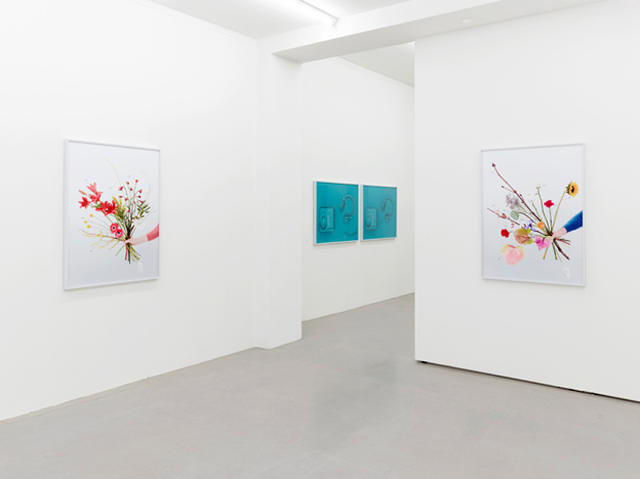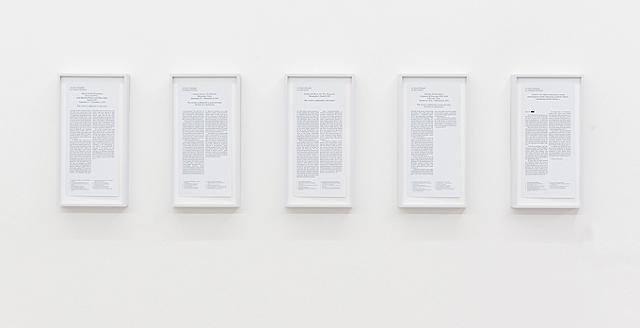A century ago, floral arrangements symbolized a vocabulary of their own. While clandestine communication today takes the form of a self-destructing message on Snapchat, people once crafted elaborate bouquets to stealthily share a message. Sending blue cornflowers might mean "be gentle with me"; honeysuckles could mean "devoted affection"; and hyacinths could say "your loveliness charms me."
In her series Critic's Bouquets, Berlin-based artist Natalie Czech invited several authors to write a 400-word review of an artist's work or exhibition of their own choice. She then provided a key of different flowers with the emotions they represent, and asked the writers to pair the meaning of each sentence with a bloom.

For example, Peter Scott chose to review The Way Things Go, a film by Fischli & Weiss presented at Documenta in 1987. Scott writes, "The behavior of objects, as with people, is never a sure thing," and paired that with rhododendrons, flowers that represent fragility, ephemerality, passion, and temperance. This process was repeated for every sentence. Czech then created a bouquet with the flowers and photographed them. The finished pieces—consisting of the bouquet pics and the written review—were exhibited at Galerie Kadel Willborn, in Dusseldorf.
"I have been fascinated for a long time by the 'language of flowers,' which became fashionable in the Victorian Age as an important means of nonverbal communication between lovers," Czech says. "First of all, it is always nice to receive a bouquet, and second, flowers look beautiful. But in the Victorian Age, you had to also read the bouquet to understand or interpret its true message. I thought one day I could use it as the base to establish a new relationship between text and image."
Inspiration for the project arose when Czech noticed that friends and acquaintances would congratulate her on receiving press in newspapers and magazines by saying, "I saw your review," not, "I read your review." This got her thinking about the act of seeing as a means of interpretation.

"What I like in the project is the interplay of perspectives in which the critic, the viewer, and I permanently switch roles," Czech says. "The critics are deciding the visual order of the bouquets through the sequence of their keywords. I am 'staging the image' and am simultaneously the 'editor' of the reviews. And [as] the viewer 'sees' the review as a visual image and 'reads' the index of the individual words, he or she interprets the meaning, and through this also becomes the 'author' of the actual review."
So say it with flowers, as the old slogan goes.